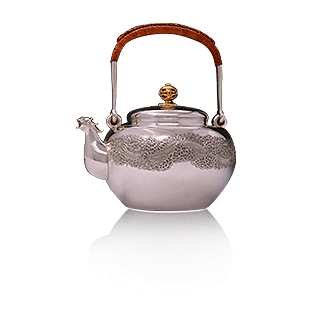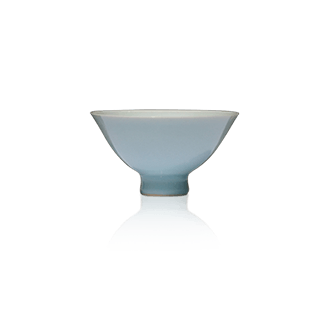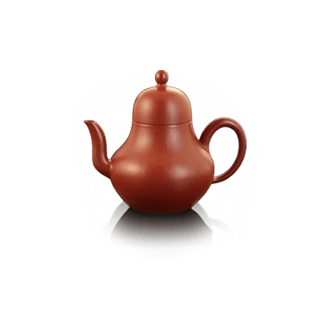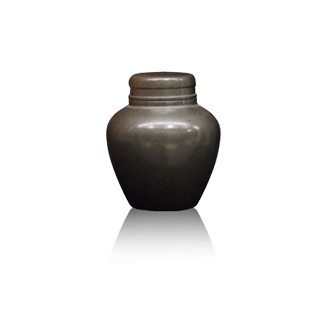

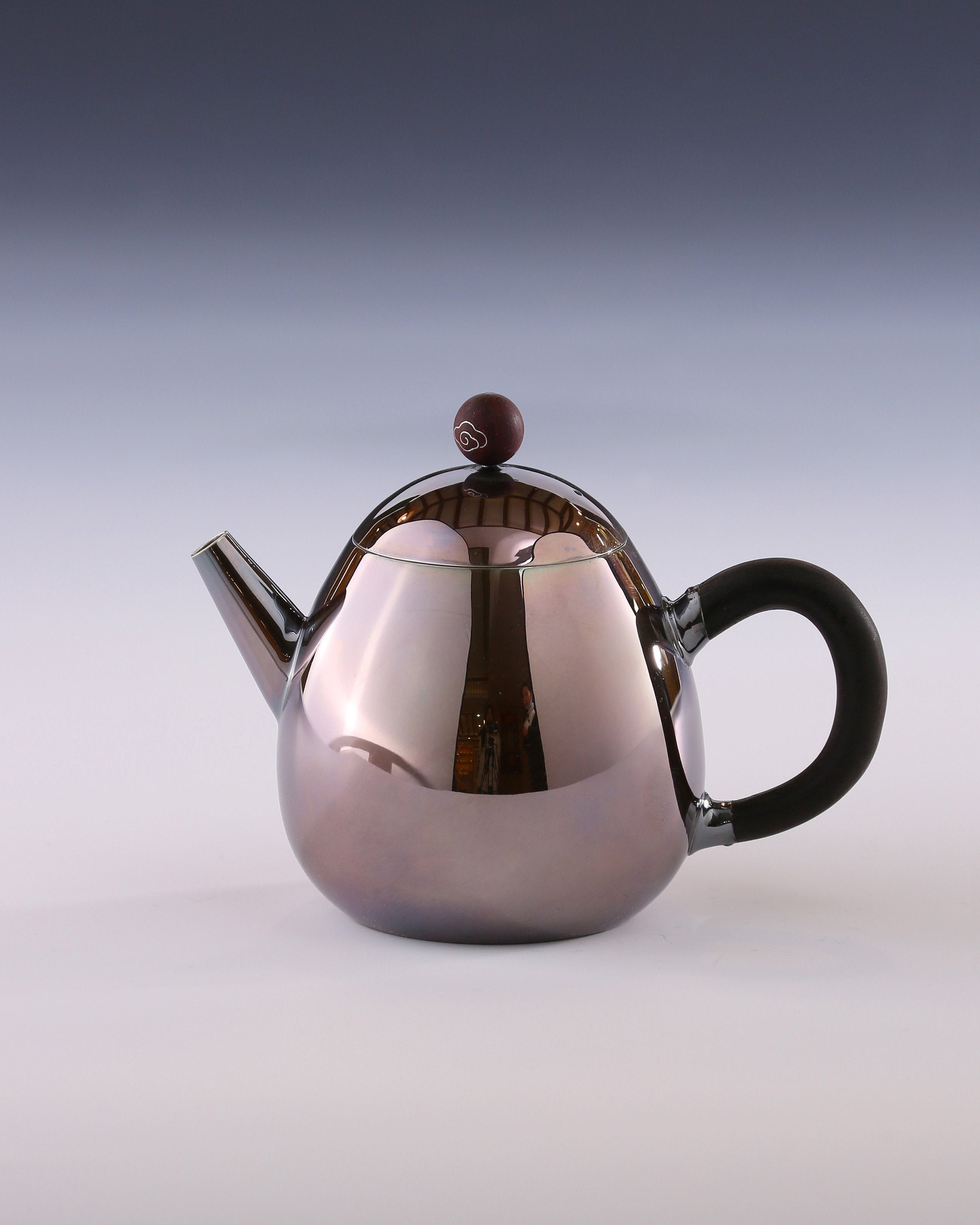
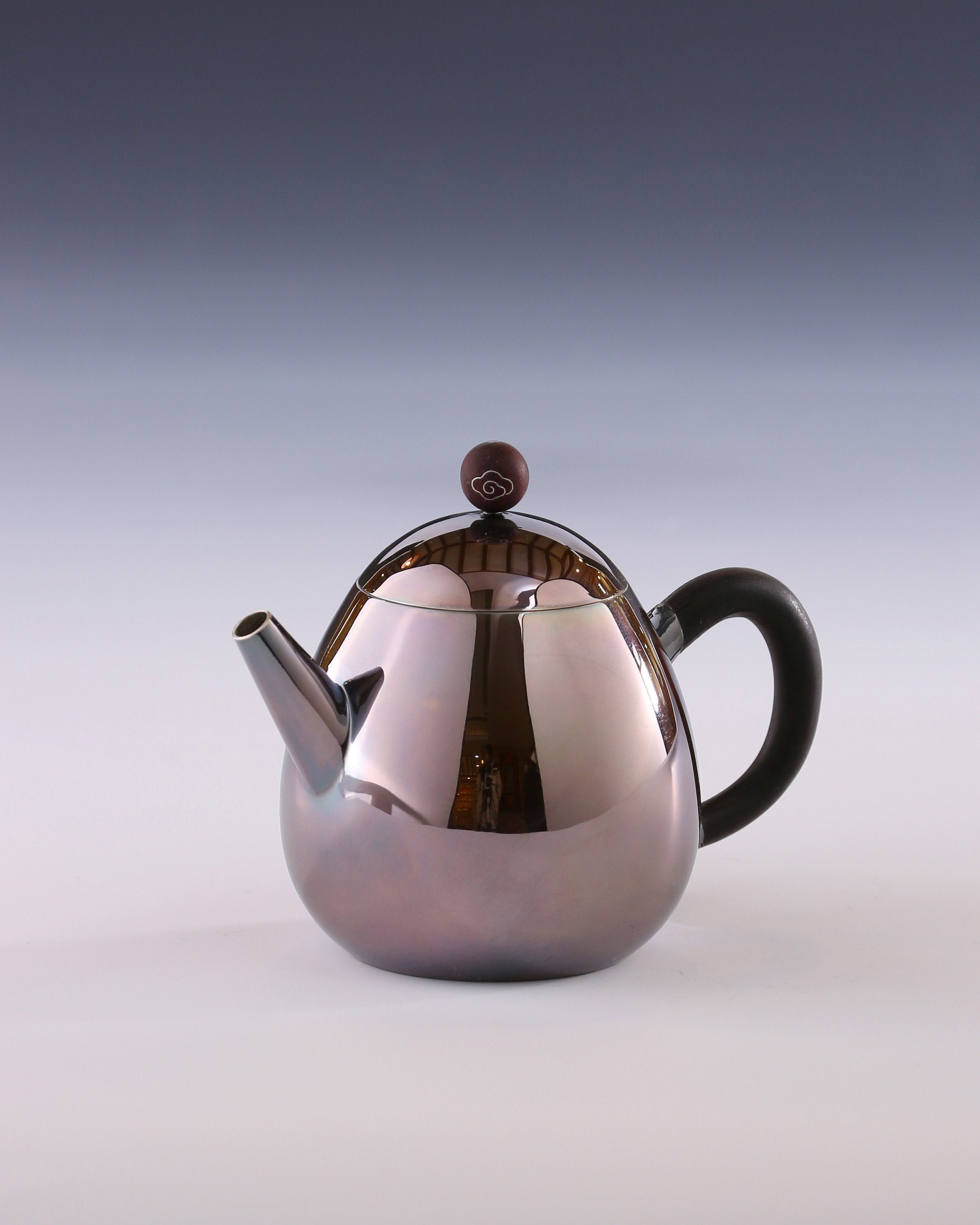
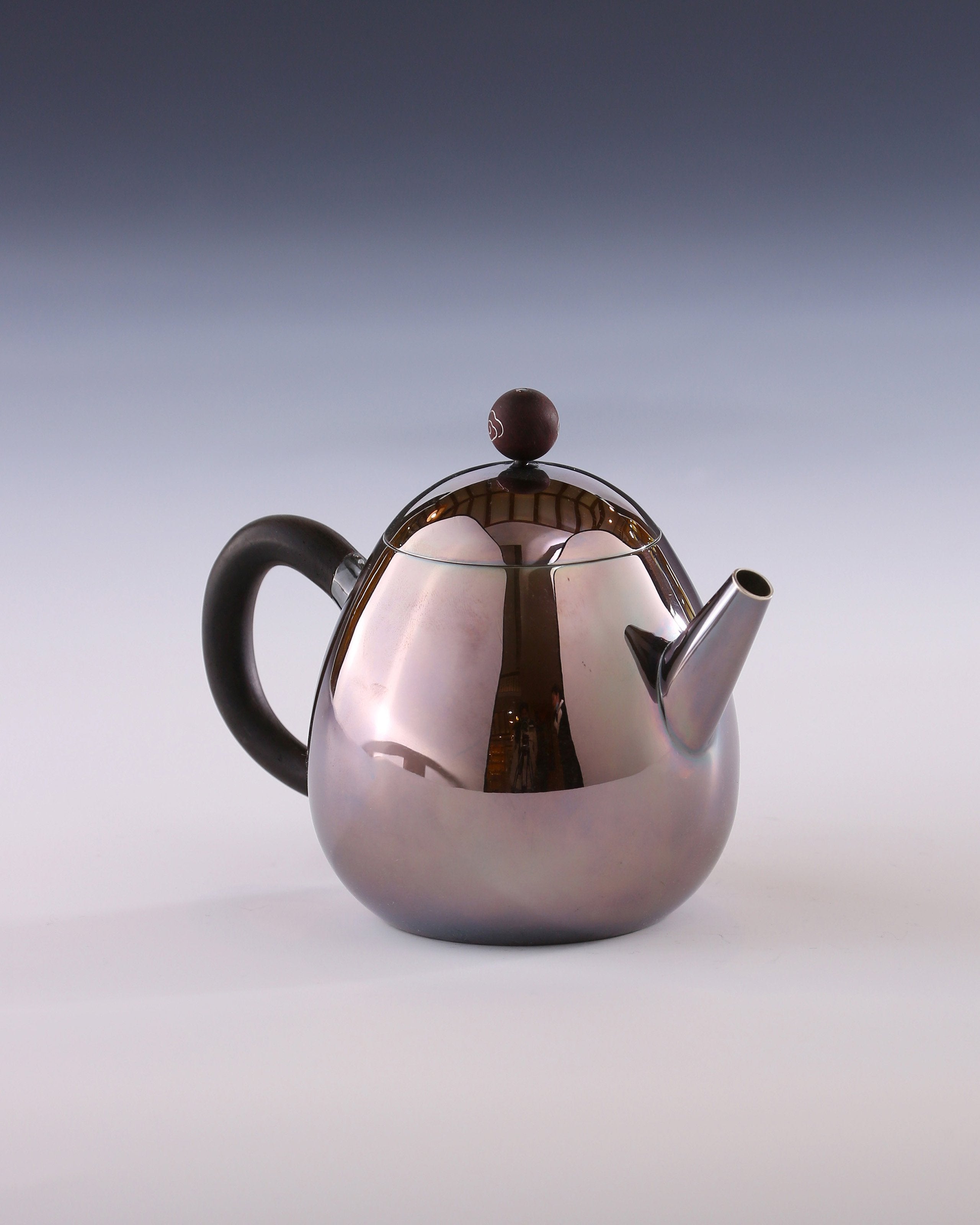
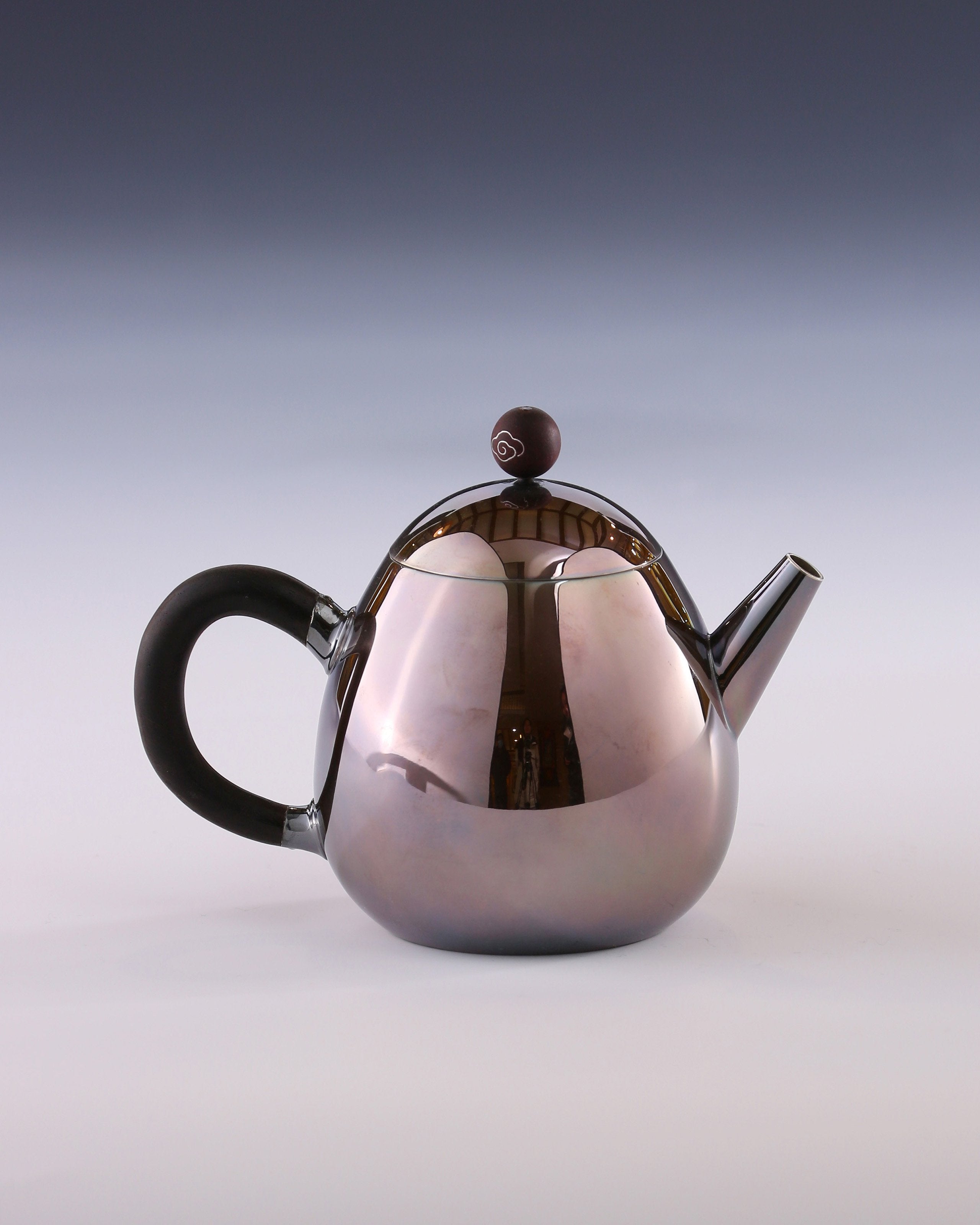

Purple-skinned dragon egg









Purple-skinned dragon egg
Purple-skinned dragon egg
Volume: Approximately 200 ml Weight: Approximately 135 grams
This purple-skinned dragon egg-shaped teapot has a sulfurized purple skin finish, adding a touch of antique charm.
The knob and handle of the teapot are made of ebony, which is not hot to the touch, and the teapot handle is inlaid with auspicious clouds in silver wire.
The round shape resembles a ball. The lid, spout, and handle flow seamlessly together, with a curved spout that allows for smooth water flow. The handle is round and full, providing a comfortable grip. The entire piece exudes a rustic charm and a childlike intimacy.
Since the creation of Yixing teapots in the Ming Dynasty, many classic and fixed styles have existed and have been passed down to this day. Among them is a round and lovely style called "Dragon Egg".
The dragon egg is shaped like an egg. Wu Meiding, a scholar of Yixing teapots in the Qing Dynasty, wrote in his treatise on Yixing teapots, "The round ones are like balls, and the body is slightly elongated, which is the dragon egg." It is said that Shi Dabin, a famous Yixing teapot craftsman in the Ming Dynasty, also made this style.
The story of the dragon egg is recorded in the Book of Songs, "The Birth of Pixiu". It is said that Pixiu, the ninth son of the dragon, hatched from the dragon egg. In folk culture, Pixiu has the meaning of warding off evil spirits and "having Pixiu in the family means having no worries".
Naming a teapot after a "dragon egg" is a beautiful and auspicious wish and aspiration.
Volume: Approximately 200 ml Weight: Approximately 135 grams
This purple-skinned dragon egg-shaped teapot has a sulfurized purple skin finish, adding a touch of antique charm.
The knob and handle of the teapot are made of ebony, which is not hot to the touch, and the teapot handle is inlaid with auspicious clouds in silver wire.
The round shape resembles a ball. The lid, spout, and handle flow seamlessly together, with a curved spout that allows for smooth water flow. The handle is round and full, providing a comfortable grip. The entire piece exudes a rustic charm and a childlike intimacy.
Since the creation of Yixing teapots in the Ming Dynasty, many classic and fixed styles have existed and have been passed down to this day. Among them is a round and lovely style called "Dragon Egg".
The dragon egg is shaped like an egg. Wu Meiding, a scholar of Yixing teapots in the Qing Dynasty, wrote in his treatise on Yixing teapots, "The round ones are like balls, and the body is slightly elongated, which is the dragon egg." It is said that Shi Dabin, a famous Yixing teapot craftsman in the Ming Dynasty, also made this style.
The story of the dragon egg is recorded in the Book of Songs, "The Birth of Pixiu". It is said that Pixiu, the ninth son of the dragon, hatched from the dragon egg. In folk culture, Pixiu has the meaning of warding off evil spirits and "having Pixiu in the family means having no worries".
Naming a teapot after a "dragon egg" is a beautiful and auspicious wish and aspiration.







Frequently asked questions
Use the FAQ section to answer your customers' most frequent questions.
Order
Yes, we ship all over the world. Shipping costs will apply, and will be added at checkout. We run discounts and promotions all year, so stay tuned for exclusive deals.
It depends on where you are. Orders processed here will take 5-7 business days to arrive. Overseas deliveries can take anywhere from 7-16 days. Delivery details will be provided in your confirmation email.
You can contact us through our contact page! We will be happy to assist you.





